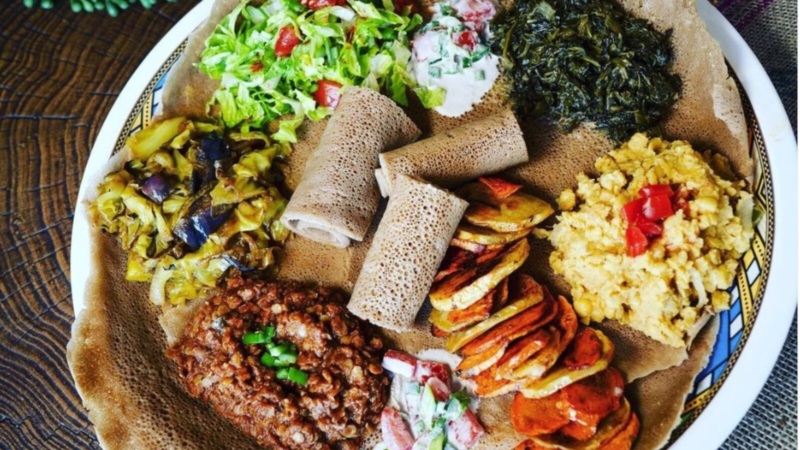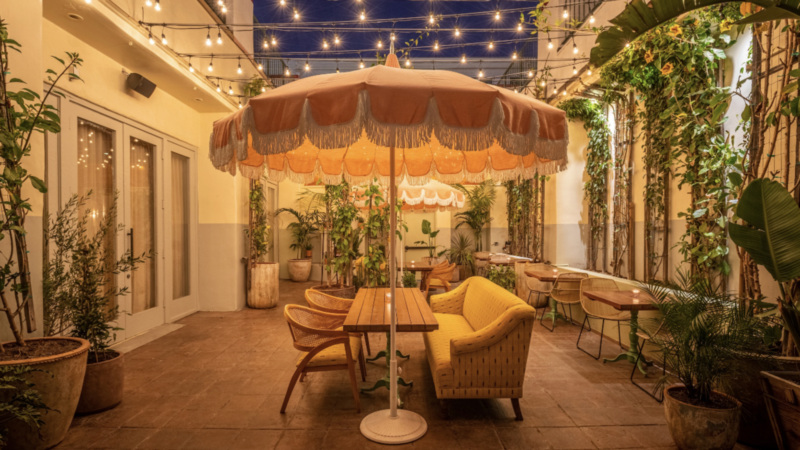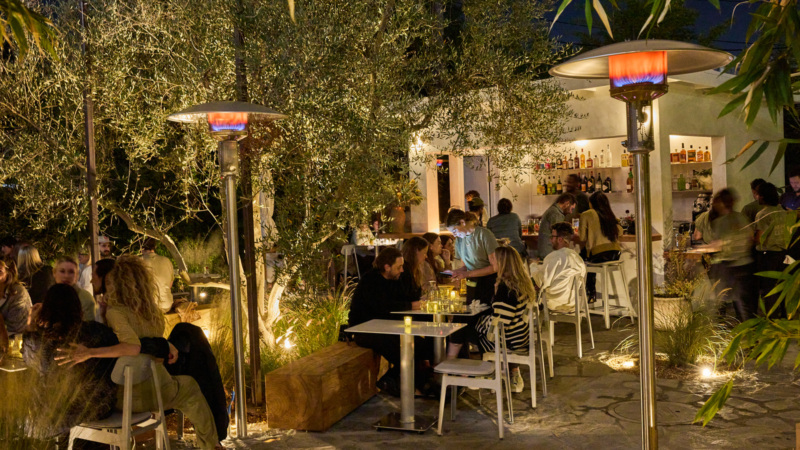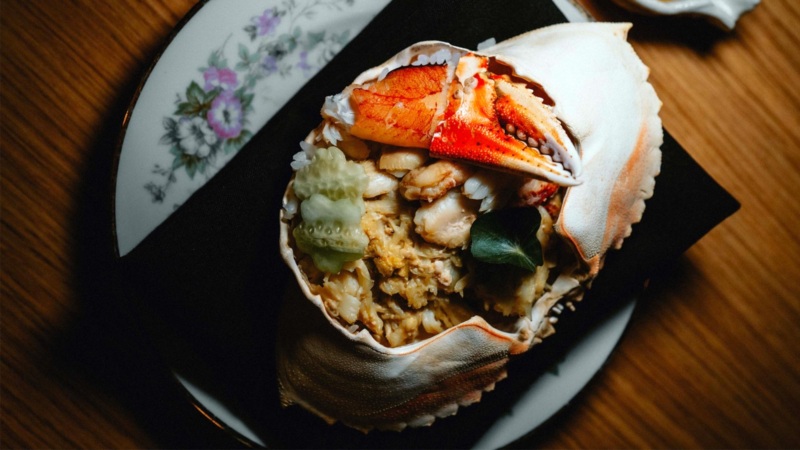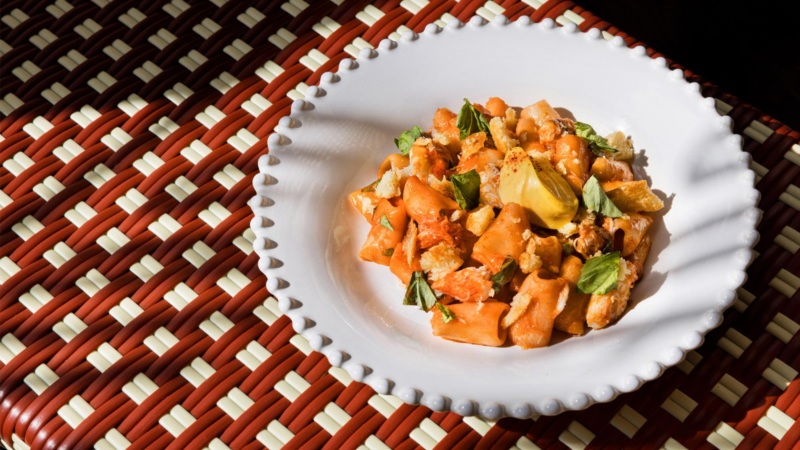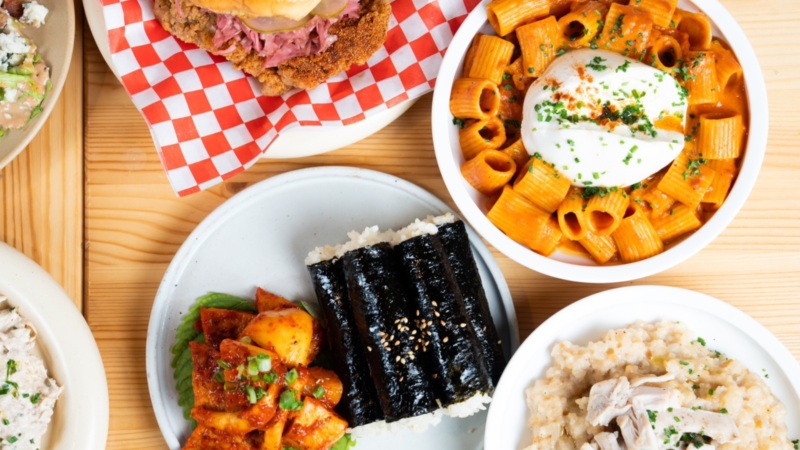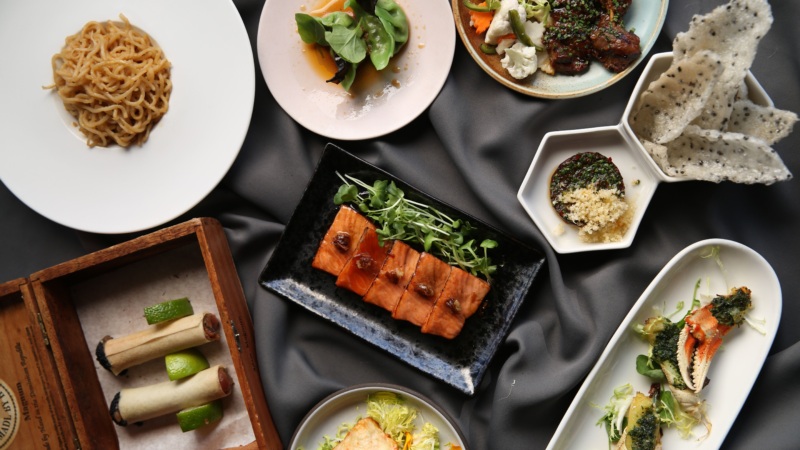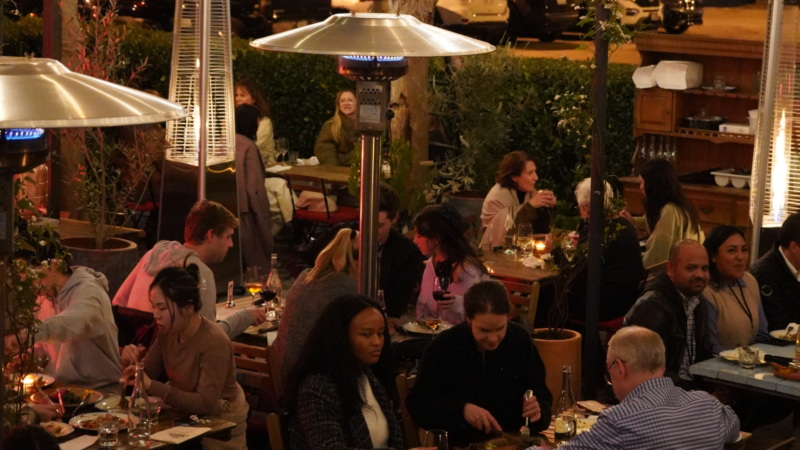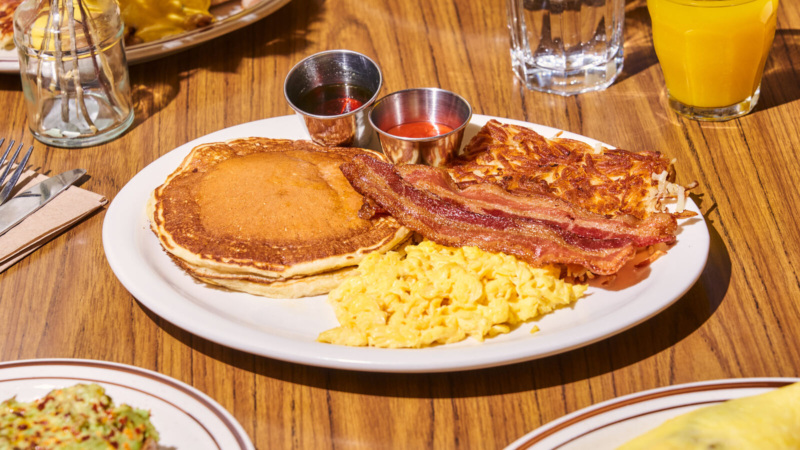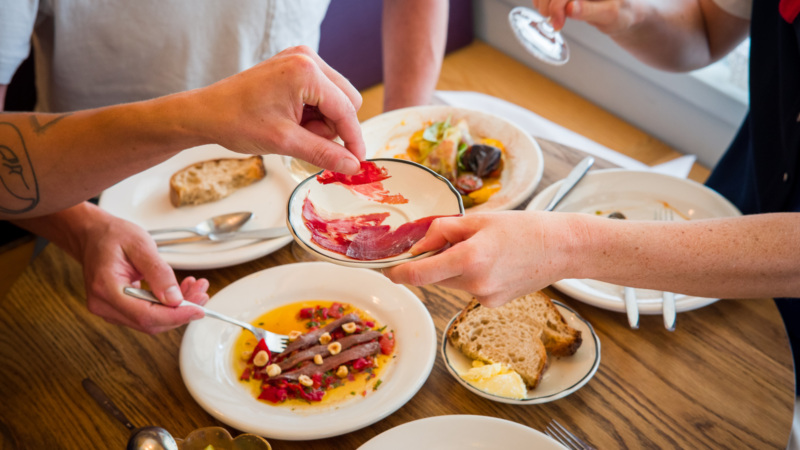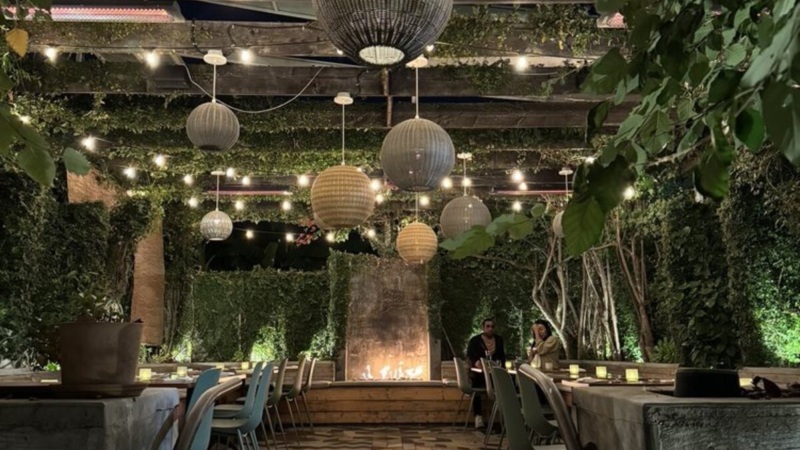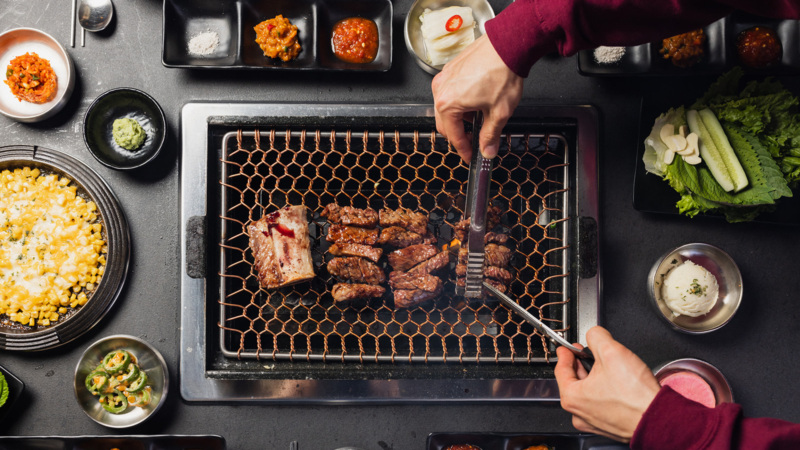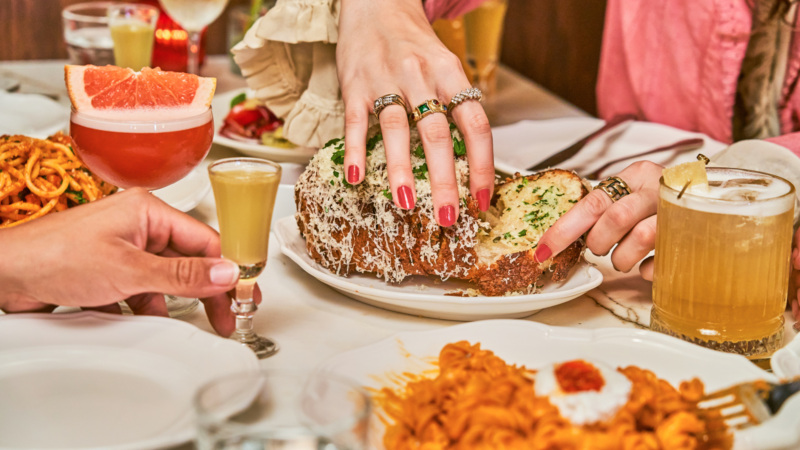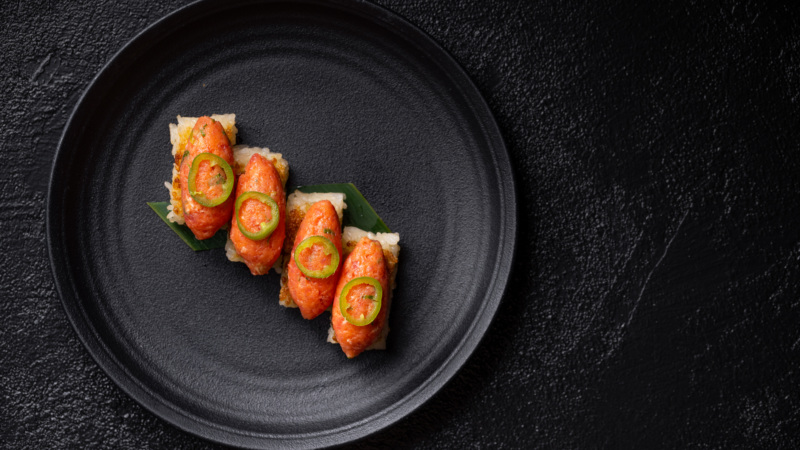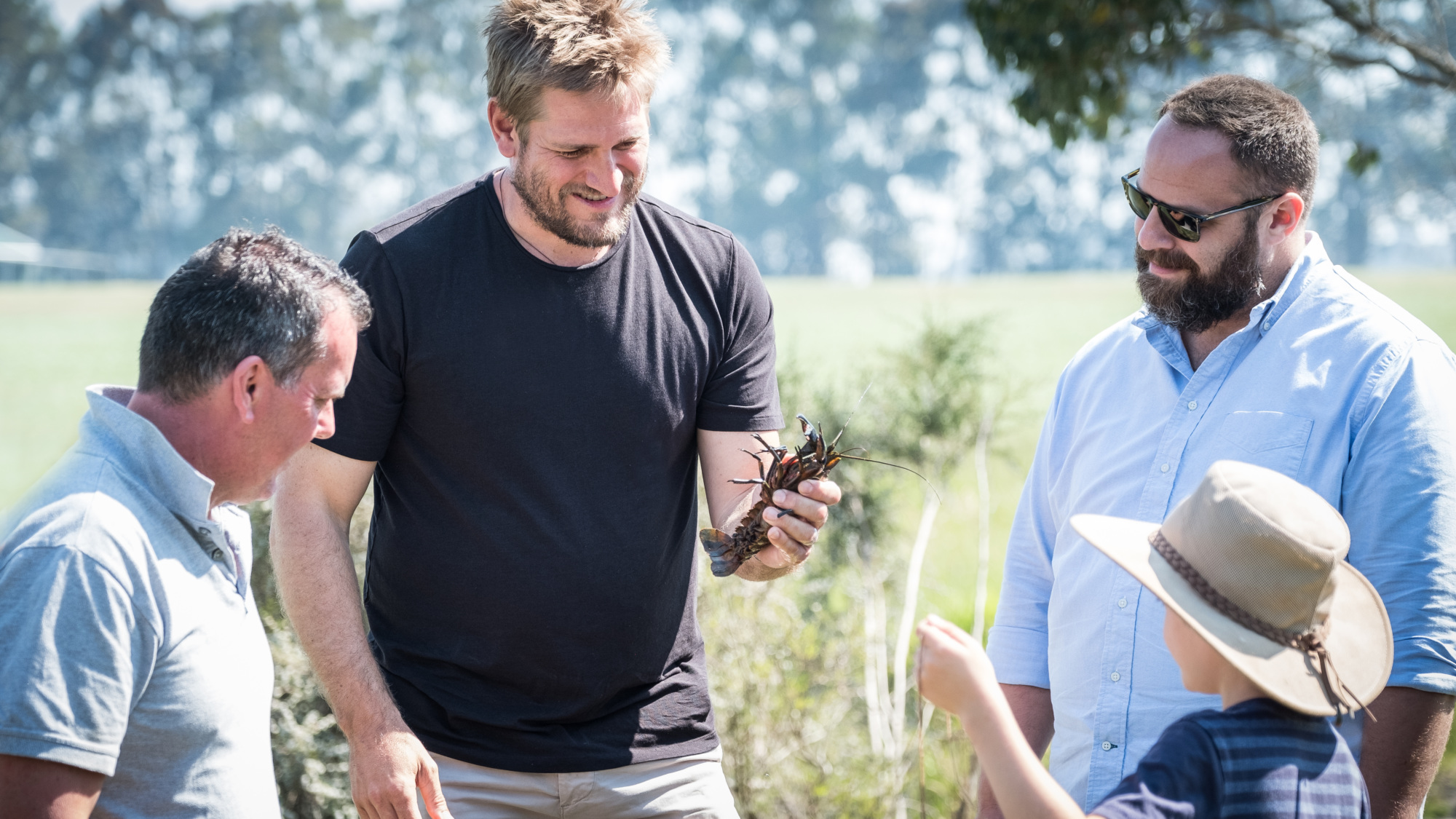
Off Menu With… Curtis Stone
Many know Australian chef Curtis Stone from his stints on TV, but he’s a restaurant chef at his core. In 2014 he opened Maude, a project both highly ambitious and deeply personal, and his first solo operation. Since then, exploration, examination, and innovation have fueled his team’s appetite for creating eye-opening culinary experiences that represent ingredients and flavor profiles from across the globe. We went Off Menu with the chef to chat about the values that power his process—from collaboration to discovery and experimentation—and how Resy’s own Off Menu Week will gives diners an opportunity to be a part of it all.
Resy: How did you end up landing in Los Angeles for your first solo restaurant?
Curtis Stone: It sort of all happened by accident. I moved to LA eleven years ago to do a TV show, which was going to be a short little stint. I’d be [in LA] while I did the show, and then return to London, where I lived at the time. But I really liked LA. I stuck around for a minute, and I then I met my wife and we started dating, and then we had children. It wasn’t a super conscious or thought-through plan.
At Maude’s founding, you ran a very rigorous program developing a new menu each month around a specific ingredient. What inspired you to do that?
I think restaurants are super personal. And the thing that really stood out to me about living in LA were the farmer’s markets and the direct relationships that you could have with farmers. America does a good job of [access to produce] in general, but nowhere better than Los Angeles. It’s a lot harder in other parts of the world to even get in touch with the farmer, because you’re usually buying everything through suppliers. I [also] think that California’s micro-climates are super cool. You could have one guy growing the most unbelievable tomatoes down near San Diego and an hour in the other direction, someone could be pulling red carrots out of the High Desert, which gets a frost at night. I thought that from a fine dining perspective I could put the ingredient under a microscope. There was fun in that, because if we were going to do carrots, we had to use different varieties, and the tops, and we had to juice them and dehydrate them to find a bunch of ways to show the diverse array of [flavors] you can get from the ingredient. I wanted it to be really challenging, I wanted it to keep me honest, keep me in the kitchen, and create an environment [my] cooks loved working in and that I loved going to.
What was the impetus for shifting from a focus on ingredients to wine regions?
We’d done [the ingredient focus] for four years. That was 48 menus with ten courses each, so we created nearly 500 dishes in that period of time, and we didn’t repeat anything—we even tried not to repeat techniques too often. It started to feel a little forced and I [realized] it was only a matter of time before it would feel tired for our guests, too. So I said, ‘let’s change it, let’s continue to innovate.’
We walked through the whole experience [of Maude] and shared, as a group, how we thought our guests felt about it. We had this crazy loyal group of guests that would come every single month to see what we’d do with a new ingredient and they expressed their love for the wine pairings, which we got really good at, because we were doing [them] so often. We started talking about that until it hit me: ‘what if the wine actually becomes the focus?’ For a lot of the menus we’d go and visit a farm, like an artichoke farm, for instance. We’d meet the growers, talk to the locals, and ask them how they cook their artichokes to get a bit of inspiration. This new concept was an extension of that, as well. We go to the wine region, learn a little bit about the people, the culture, the food, the wine, the history, and the music, and look at the architecture, and think about how we can interpret it into a delicious menu.
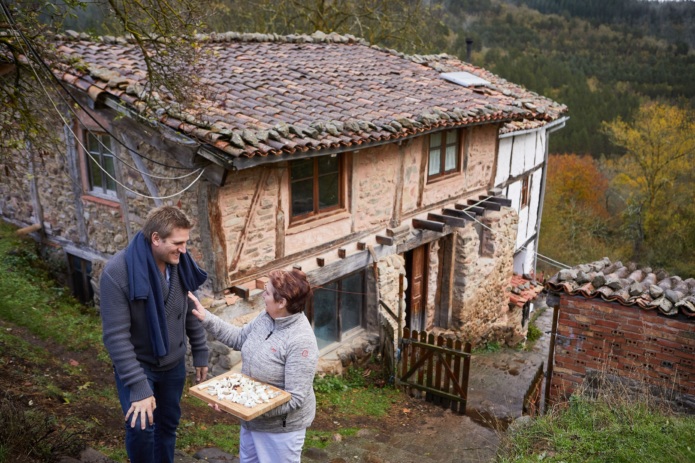
How do you plan each trip: which wineries to visit, where to dine, and who to meet?
The wine team does their research. They set up appointments with the contacts they already have, and ask those people to introduce them to new places. And they do lots of reading. We do the same thing from a culinary perspective: we usually have a chef we know or someone that’s from the region that we know, so we’ll make phone calls and get some introductions, look up restaurants, and uncover what the important ingredients are from that area. We took the team to Western Australia and to me, the indigenous people were also super important to represent in the menu. That wasn’t as much a culinary focus, but I wanted the team to experience Pilbara in the outback of Western Australia. We hung out with some Aboriginal groups for a couple of days. Some of that was food-related—we went hunting and spearfishing with them—but mostly we learned about their history and culture, so we could try and interpret it into stories and dishes that we created.
How does that education play into your service?
It’s our job to get a read on the diner’s appetite for [education]. We don’t want to beat people over the head with it if they’re just here for dinner. Some people do want to be left alone, so we try to be really respectful of that. There are diners who are super curious and want to know everything about where we were and what we learnt, so we tailor the experience. It’s the same with the wine. We serve ten wines from the Margaret River and the surrounding regions, and if you want to know all about those regions, the kinds of wines they produce, the typical characteristics you’ll find, and what each winemaker is doing differently, we’re there to tell you all about it. But if you just want to drink it, you’re welcome to do that (laughs) as well.
Do you source your ingredients from the region, or locally?
A bit of both. On the Western Australian menu (currently on offer), we bring back freshwater marron [crayfish], which is not otherwise found in America. Pearl meat is another thing that we’re bringing over and Western rock lobster. Also, indigenous ingredients like riberry and Quandong–a native peach. Finger limes. There are [ingredients] that you can’t get locally that we want to show off, but there is also a variety of things that aren’t practical to bring back and can be sourced locally, so we do that.
What’s your process for determining which area to hone in on next?
I wanted Maude to be more collaborative [than your typical restaurant]. I wanted the front of house to feel as important as the back of house, and I wanted [each team member] to have a real voice. We’ve done that and it’s worked. In the next menu that we’re doing from Sonoma, we’re actually letting the wine lead in most of the menu. We’ve flipped the whole concept on its head again by asking [our sommeliers] to pick ten incredible wines that they want to feature from Sonoma, and [have vowed] to create a dish in honor of each wine. We’re playing around with the structure, because it’s interesting for the chef to be challenged to understand the complexity of the wine, draw out flavors, and then pair them with things that are going to be delicious.
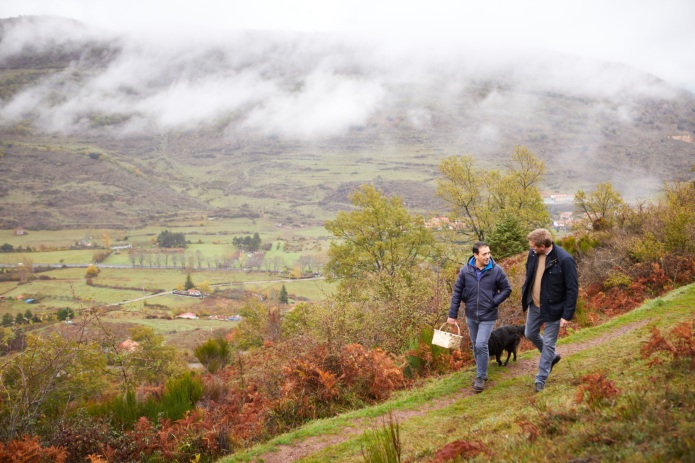
Do you have a favorite of the wine regions you’ve covered thus far?
I loved Rioja. It was our first concept and maybe part of that excitement was just the start of a new concept, but I learned so much while I was over there. It has a really interesting dichotomy of new and old. We met people who were super steeped in tradition, we met people that were super forward-thinking and molecular in their approach. And then we met people that were both. I met this guy Francis [Paniego]. The women in his family have run the [three-Michelin star Echaurren] restaurant for five generations: his great-great-grandmother gave it to his great-grandmother, who gave it to his grandmother and then his mom, and he was the fifth [in line]. He serves incredible, traditional stuff that he learned from the generations [before him,] but then he was also doing totally wacky, cutting-edge [cuisine].
Australia is super close to my heart. I haven’t cooked regularly in Australia for 20 years, so to be able to come back, analyze it, and [determine] the story I wanted to tell when people came to eat my Australian menu was really personal. I found myself getting super prideful when we were back [in LA] showing off ingredients and the history and the culture. After getting to spend time with the Aboriginal people, who have existed in the country for [almost] 50,000 years, and learn their story, [I found it] amazing that we haven’t searched their culture. They didn’t build a structure, they didn’t farm much. They pretty much existed off wild animals and wild ingredients that they hunted and gathered. Think about how big Chinese medicine, another really old civilization, is—world-wide. The Aboriginal culture is not celebrated at all or researched in a way that I think it deserves to be, so that [experience] was really emotional for me. It was cool.
Australian café culture (avocado toast, flat whites) has been hugely influential stateside, but what aspects of Australian cuisine do you think are underrepresented?
If you study that last 200 years, you’d talk about how the British came and then the Italian migrants came [followed by] the Greek migrants and Southeast migrants. They’ve all added to the culture and have [helped] develop what mainstream Australia and New Zealand are today. I think we have the best coffee in the world and an incredible café culture. We have a really interesting mix of Southeast Asian and European styles of cooking. But if you go back further and dig deeper into the past environment that is Australia, there’s a reason that everything is so deadly. It’s a very arid environment. Most of the country is a desert. A lot of the ingredients that come out of the outback, like akudjura (bush tomatoes) are hard to even describe, because they’re so uniquely different from other things. They’re also quite delicate and very hard to forage and find. So, there are a variety of reasons that keep them there, but, there’s an interesting company called The Australian Superfood Co. that is foraging ingredients and then dehydrating them to turn them into powder to make them more accessible. So, I think you’ll see a lot more of it moving forward.
Are there any regions that are on your radar that you’re excited to dive into?
When you ask me that question I think of the things I like to drink. I love Champagne so I’m dying to go to Champagne and drink lots of beautiful, old, rare, hard-to-find Champagnes. It’s a really light cuisine. I love to learn, too. I haven’t spent much time in South or Central America, so I’m really excited to go to Chile and Argentina. Southeast Asia has got some interesting things going on, too. Japan has sake, of course, but they also create other wonderful wine.
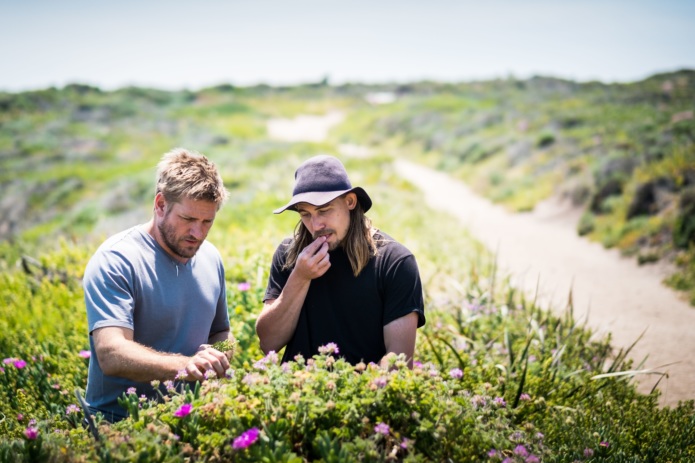
How does Resy’s Off Menu Week add to the experimental nature of Maude?
It’s really fun because developing a menu is a very internal process. There is only a [handful] of people who really influence it. Me and maybe a couple of other chefs, and then the wine team. We never get to sell it to anyone outside of our own kitchen before we launch it. [Off Menu Week] allows us to [expand upon] our experimental process by sharing it with diners and get their opinions, which I’m really looking forward to. Also from a wine-pairing perspective… sometimes we’ll get settled on a dish and then the team will pull three wines [to pair with it] that are often really different from each other, but we can only choose one. So we’re playing around with the idea of presenting a few different wines as the potential pairings and have [our guests] become part of the decision-making process.
What are some of your favorite restaurants—in LA and beyond?
There are a variety of good places to eat in LA. We eat sushi and Korean food more often than not, so we don’t eat a ton of fine dining. But I think Sang Yoon does a good job down at Lukshon. I think the guys from Animal do a really good job. Ludo [Lefebvre, of Trois Mec] does a good job. There are a bunch of little hole-in-the-walls, a lot of little Mexican joints that are super delicious. I was in New York and I ate at Loring Place, which was awesome. Roister in Chicago, I love. I just went to a joint in New York called King, which was really good. I love those little hard-working kitchens. There are only a few people in there and they’re busy; they’re doing [upwards of] 70 covers and they knock it out. I went to a Vietnamese joint here in Melbourne last night called Anchovy. There are two or three female chefs and one dude, maybe, and they have unbelievable food. It’s really experimental. They served snails and raw kangaroo with incredible light, vibrant, spicy flavors. It was so good. There’s so much good food in the world.

